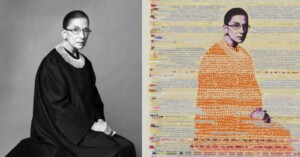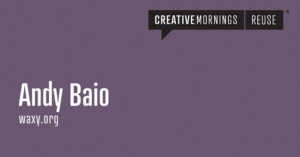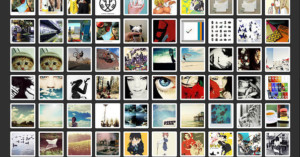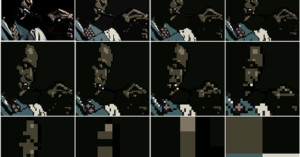
The Head of Microsoft AI Thinks All Content Online is ‘Fair Use’
The CEO of Microsoft AI Mustafa Suleyman has shown an alarming ignorance of copyright law after he claimed that all content on the open web is fair use.

The CEO of Microsoft AI Mustafa Suleyman has shown an alarming ignorance of copyright law after he claimed that all content on the open web is fair use.

A photographer has emerged victorious after suing a website for using his Creative Commons image without the proper credit.

An artist, whose work has been exhibited at the Metropolitan Museum of Art, escaped a copyright infringement lawsuit over her unlicensed use of an iconic photograph of Ruth Bader Ginsburg.

In one of the first intellectual property cases brought to federal court that deals with non-fungible tokens (NFTs), fashion brand Hermes has won a copyright lawsuit against an artist who created NFT versions of its Birkin bags.

The U.S. Court of Appeals for the Ninth Circuit has ruled in favor of photographer Elliot McGucken who brought a case against Pub Ocean Ltd after they published photos of a lake that had formed in Death Valley without permission.

When is copying another’s work not stealing? Andy Warhol copied a photograph taken by Lynn Goldsmith of the musical artist Prince and created sixteen colorized and stylized visual works.

A panel of judges has ruled in favor of the Metropolitan Museum of Art over a copyright case. Florida-based photographer Lawrence Marano alleged that the museum stole his 1982 photo of the band Van Halen in the 2019 exhibition Play It Loud: Instruments of Rock and Roll.

A District Judge in Manhattan has sided with the Andy Warhol Foundation for the Visual Arts in a fair use case that will likely leave many photographers upset. The case surrounds a set of screen prints, silk-screen paintings and other artworks that Warhol created for Vanity Fair by altering a portrait by renowned photographer Lynn Goldsmith.

In July of 2018, a Virginia federal court sparked an uproar among photographers by ruling that finding a photo on the Internet and using it without permission on a commercial website can be fair use. Good news: an appeals court reversed the decision today in a big win for photographers (and other creatives).

A federal court judge in Montana has sparked controversy among photographers after he ruled that the Republican National Committee (RNC) didn't infringe a photographer's copyright when it used her photo without permission on a political mailer.

A Virginia federal court has made a decision that photographers won't be happy to hear: the court ruled that finding a photo on the Internet and then using it without permission on a commercial website can be considered fair use.

In 2014, controversial artist Richard Prince had an exhibit of reappropriated Instagram images at the Gagosian Gallery in NYC, selling the prints for up to $100k each. He sought no permission for the Instagram images used, which led to photographer Donald Graham suing for copyright infringement. A judge has now ruled the suit can proceed.

If you find that someone is using your photo online without your permission, one thing you can do is send a DMCA take down request to force the hosting company to remove the image. But be careful, though: you need to make sure the usage doesn't fall under fair use. Otherwise, you could be liable for sending a bad-faith take-down notice.

A white police officer in South Carolina is facing murder charges after shooting an unarmed black man in the back and killing him as he ran away. A bystander named Feidin Santana witnessed the whole incident on April 4th and managed to capture cell phone footage, which then became widely seen around the world and sparked fresh new outrage about police brutality.
Now, nearly two weeks after the shooting, the video is at the center of a new discussion: news outlets are being asked for a $10,000 fee if they wish to share the video.

Want to learn the basics of US copyright law without having to spend eons going through imageless websites and backbreaking textbooks? Check out Bound by Law. It's a comic book that translates abstract and confusing copyright laws into easy to understand "visual metaphors."
By the time you're through with the 72-page comic, you'll know quite a bit about the basics of copyright law, including fair use, infringement, and public domain.

When people are browsing around online for photographs to use, be them for an article, a project or something else, it’s vital to know whether or not they’re allowed to use the image. Even if they’re allowed to use the image, it’s important to know what all can be done with it.
Here to help those with any image in question is this handy little infographic, created by Curtis Newbold, The Visual Communications Guy.

New York Republican mayoral candidate Joe Lhota may be running as a law and order guy, but apparently the "law" part doesn't cover intellectual property.
Turns out nine of the images used in a recent Lhota campaign ad -- an ad meant to illustrate what a mess the Big Apple used to be -- were taken without permission from Flickr users, several of whom are not too happy about it.

Finnish lawmakers could soon rewrite the nation's copyright laws, as a citizen-originated initiative aimed at easing piracy penalties and protecting consumer rights makes it way to Parliament.

The wildly successful Kickstarter campaign Blackprints is currently at the center of a heated controversy over stolen images that has already involved one copyright dispute. It seems that the campaign's creator, Sabrina Chun, might have taken to acquiring photos of cars off of the Internet, changing them to black and white minimalist versions, and selling them as part of this campaign. (See Update)

Creative Commons is a non-profit organization founded in 2001 that, over the years, has released a set of licenses that enable creative types to share their work with others. The content creator allows others to use their work, just as long as the users follow the guidelines set forth in that particular license. It's a "some rights reserved" system rather than an "all rights reserved system."
In the photographic community, some aren't fond of CC licensing while others are downright prolific about it. But if you're looking to license some of your content in this way, this useful infographic put together by CC Australia will help you navigate the common licensing combinations.

There's a fine line between fair use, copyright infringement, and downright theft. And while some might argue where exactly that line stands, "rephotographer" and appropriation artist Richard Prince just got a Federal Appeals Court to take his side in what may turn out to be a landmark ruling regarding fair use.

Andy Baio has some experience with copyright infringement, especially where iconic photographs are concerned. In case you didn't read our previous coverage on the matter, his story goes something like this: in 2009, he put together an 8-bit version of Miles Davis' album "Kind of Blue" called "Kind of Bloop," and for the cover art he had a friend create a pixel-art version of Jay Maisel's famous cover photo.
Maisel wound up suing Baio for over $100,000 for the infringement, and despite an offer for free representation, potential court costs still forced Baio to settle out of court for $32,500. Baio wound up writing a long blog post about the matter, and now, a couple of years later, he's expanded on that post in the above talk he gave at Creative Mornings in Portland.

A serious car crash at the NASCAR Nationwide Series Drive4COPD 300 this past Saturday caused debris to go flying into the stands, sending a number of spectators to the hospital -- some with very serious injuries. A fan named Tyler Andersen was in the area where the accident happened, and had his camera recording video as the whole thing unfolded. After the incident made national headlines, Anderson posted the 1m16s video above to YouTube (warning: it doesn't show any injuries, but it's a bit disturbing).
NASCAR wasn't too pleased with the video, and sent YouTube a DMCA takedown request, claiming that it was a case of copyright infringement. YouTube complied and took down the video, sparking cries of "censorship."

Shepard Fairey avoided jail time after all. The Obama HOPE poster artist was sentenced today to two …

The Portland Press Herald has agreed to fork over $400 to a woman named Audrey Ann Slade after its use of one of Slade's photos sparked a furious fair use debate online. The paper published a story last week about Reverend Robert Carlson, a minister who committed suicide recently after being accused of abusing young boys. Specifically, the piece reported on the fact that Slade's photos proved that Carlson continued to engage in on-campus events after resigning abruptly in 2006 from his position as chaplain.

Back in 2006, a pornography publishing company named Perfect 10 attempted to sue Google over copyright infringement, claiming that the thumbnails displayed on Google's image search did not fall under "fair use." Ultimately, the Supreme Court wouldn't even hear the case, allowing the ruling that thumbnails are fair use to stand and handing Perfect 10 yet another loss (they've sustained many in this area).

In 2009 Andy Baio of Waxy.org -- founder of Upcoming.org and former CTO of Kickstarter -- created Kind of Bloop, an 8-bit tribute album to the best-selling jazz album of all time, Kind of Blue by Miles Davis. While Baio meticulously licensed all the music he used to create the album, he released a pixelated version of the original album cover (top, second from left) without licensing it, believing it was different and low-res enough to be considered fair use. He was then sued by the photographer, Jay Maisel, who "felt violated to find his image of Miles Davis, one of his most well-known and highly-regarded images, had been pixellated [...]".

Turns out turning photographs into stencils isn’t transformative enough to be defended as “fair use”. In a case that …

Update: The ruling has been overturned, and a judge has ruled that Prince's usage is fair use.
Richard Prince, the artist who "rephotographed" a cigarette advertisement and had it sell for more than $1 million, has just lost a copyright infringement lawsuit after being sued by photographer Patrick Cariou. Prince had taken 41 photographs made by Cariou from the book Yes, Rasta, modified them in various ways (sometimes minor), and displayed them at a gallery exhibition as his own work (above is one of Cariou's photos on the left with Prince's piece on the right). The exhibition went on to generate over $10 million for Prince and the gallery.

Earlier this month, the Daily Mail published some photos taken at a Dalston …